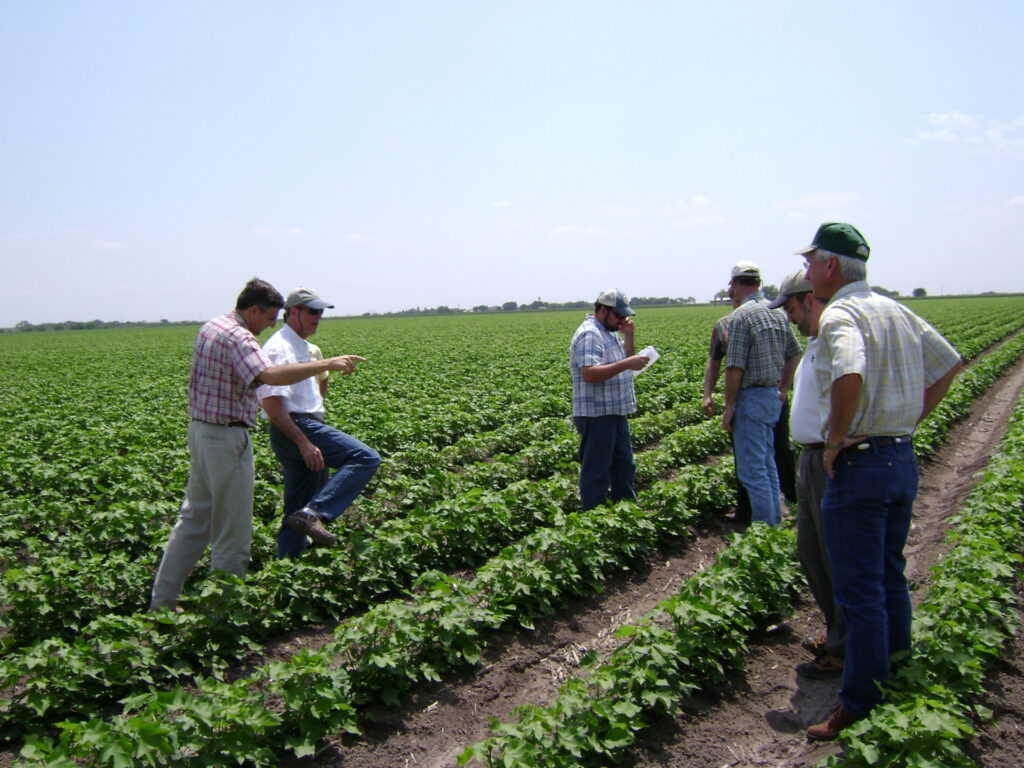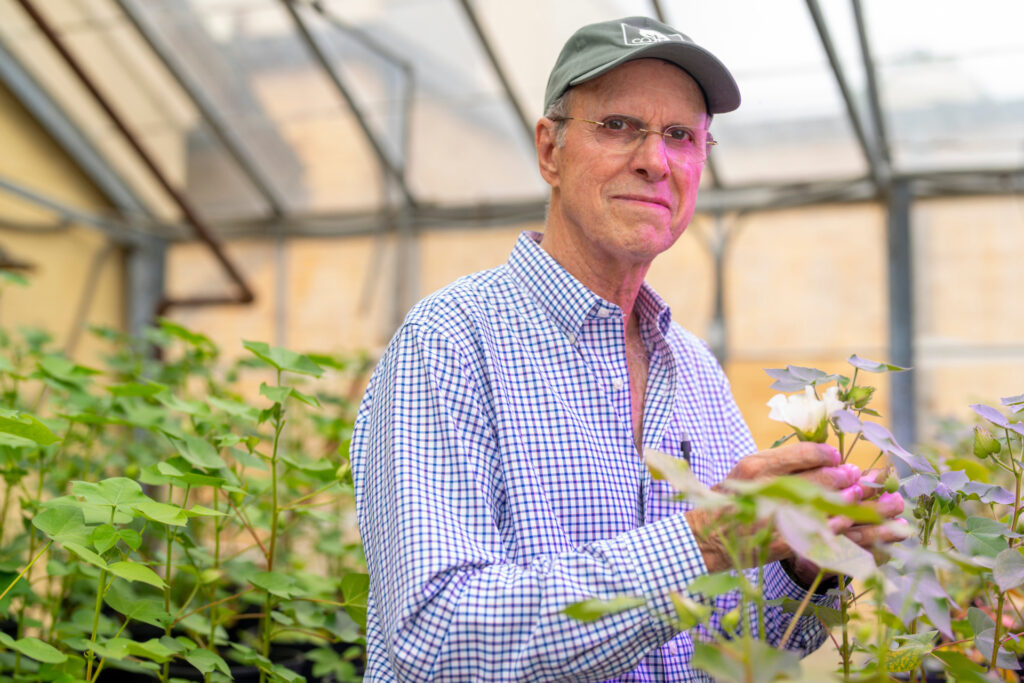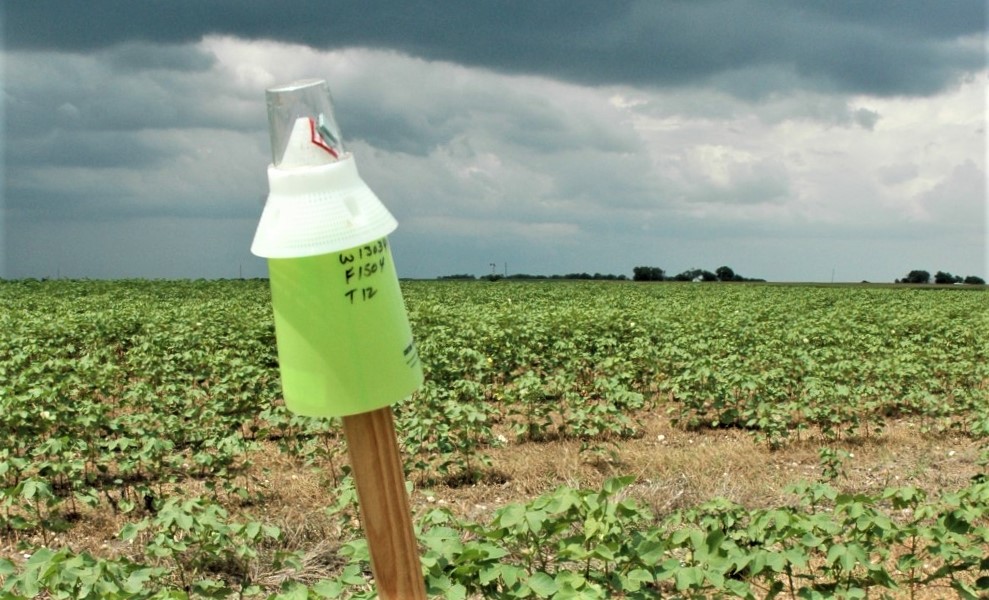Boll weevil eradication most successful pest insect elimination program
30 years ago, Texas A&M AgriLife joined an ambitious effort that still reaps benefits
Boll weevils plagued the cotton industry throughout much of the Cotton Belt for almost a century before entomologists and producers executed one of the most successful pest eradication programs in the U.S.

Texas cotton producers have waged a 30-year campaign against the boll weevil.
Battles and watchful monitoring continue, but the Boll Weevil Eradication Program is winning with the help of Texas A&M AgriLife and the Department of Entomology in the Texas A&M College of Agriculture and Life Sciences. The eradication program is among the most successful public-private partnerships in U.S. agriculture history.
Boll weevils still cling to around 20% of the cotton acres in the Lower Rio Grande Valley along the river. But 30 to 40 years ago, it was a major problem plaguing millions of acres spanning the Cotton Belt from California to the Carolinas.
The pest was costing producers billions of dollars in input costs and yield losses annually. Additionally, managing boll weevil infestations was also exposing the environment and beneficial insects to tons of pesticides each year.
Developing a plan to fight the boll weevil
The boll weevil eradication has protected billions of dollars in income for Texas’ cotton producers.
Texas cotton production represents a $2.4 billion contribution to the state’s gross domestic product. From 2019 to 2021, Texas cotton producers averaged 6.2 million bales of cotton on 4.6 million harvested acres, generating $2.1 billion in production value. The Texas cotton industry supports more than 40,000 jobs statewide.
A 2022 Texas A&M AgriLife Extension Service economic impact evaluation of the eradication program estimated the cumulative increase in net returns to Texas cotton producers since 1996 to be $5.5 billion.
Ray Frisbie, Ph.D., AgriLife Extension entomologist and professor, retired, and J. R. Brazell, Ph.D., a U.S. Department of Agriculture–Animal and Plant Health Inspection Service, USDA-APHIS, scientist, wrote the initial Texas Boll Weevil Eradication Plan in 1993. The plan called for the formation of the Texas Boll Weevil Eradication Foundation by the Texas Cotton Producers Inc. as the primary organization to implement eradication.
The foundation is charged with the eradication efforts and assisted by AgriLife Extension, Texas A&M AgriLife Research, the Department of Entomology in the College of Agriculture and Life Sciences, the Texas Department of Agriculture, USDA and APHIS.
Frisbie said reducing the boll weevil’s range to where it is today took an enormous amount of collaborative effort between cotton industry organizations and state and federal agencies, as well as long-term buy-in and financial commitment by cotton farmers.
“Before it started, there was a lot of debate among scientists about whether an eradication program was even feasible,” he said. “But it is the single most successful insect elimination program in the U.S. It’s a big victory.”

Cotton growers declare war on the boll weevil
The boll weevil is a small beetle that lays eggs in developing cotton buds or bolls. The larvae feed on their host plant for up to two weeks before pupating. Several days later, adult boll weevils chew their way out of the square or boll. Their 16- to 18-day development from egg to adult means up to seven generations of boll weevils can be produced each year.
Since its introduction to the U.S. in 1892, the boll weevil inflicted devastating damage to cotton producers and rural economies throughout the first half of the 20th century. Their presence discouraged many farmers across the Cotton Belt from planting cotton, but by the 1950s producers were fighting back with organochlorine pesticides like DDT.
By the 1960s, boll weevils were showing widespread resistance to a range of pesticides due to heavy spray regimens. Frisbie said it was common for producers to spray irrigated cotton fields 15-20 times by airplane each growing season.
“It was not uncommon to hear crop dusters in the air from dawn to dusk,” he said. “And now after eradication, you hardly ever see them.”
The economic cost of boll weevil control was taking a toll on farmer budgets, but such intense insecticide programs were also taking a toll on the environment, including beneficial insects, and allowed other pests like the boll worm to become a problem, Frisbie said.
The nationwide eradication program began as a theory only a handful of scientists including Frisbie believed might succeed. Frisbie said Edward Knipling, Ph.D., former director of USDA’s Entomology Research Division, was the plan’s architect. He believed a collaborative research-driven holistic approach could eradicate the boll weevil.
The USDA, working with farmers and university scientists, initiated a pilot eradication program in Mississippi in the early to mid-1970s. This program demonstrated the technical feasibility of eradication.
A second and larger pilot eradication effort was conducted in North Carolina and Virginia in the late 1970s. This program demonstrated eradication was technically possible and economically and environmentally sustainable. Eradication began nationally in the early 1980s starting in the Carolinas and California.
Eradication program gains ground
Woody Anderson, a cotton producer and chairman of the Texas Boll Weevil Eradication Foundation’s board of directors, has grown the crop around his family farm in Colorado City since 1974. Those were difficult days for cotton producers, he said. Boll weevil damage reduced fiber yields but also impacted fiber grades by staining the cotton.

Some farmers were implementing strategies such as stalk destruction to reduce overwintering, and uniform planting dates to “spread the pain” of infestations, Anderson said. Winter freezes helped season-to-season infestations, but producers were subject to the ups and downs of dealing with a persistent and increasingly problematic pest.
“By the 1990s, boll weevils were a real problem in Texas,” he said. “Farmers would spray in the afternoon and the next morning when the blooms opened, there would be weevils in the blooms. Producers were fighting boll weevils constantly.”
Anderson said the eradication program’s early successes translated into wider cotton producer buy-in. Cotton producers saw the benefits of coordinated efforts to treat boll weevils and implemented standardized cultural controls like crop rotation and post-harvest removal of plant material that could support overwintering pests.
Cotton farmers also have provided a majority of the funds to battle the weevil, with cost-share assistance from state and federal governments.
“The cotton producers paid the way but their buy-in wasn’t just the money to make the program go,” Anderson said. “The farmers had to work together because if Farmer Joe next door wasn’t implementing the program and hosted reproduction then the program goes nowhere. We’ve had great grower support.”
In Texas, eradication started in 1994 and began on one front in the southern Rolling Plains. A second eradication front began in 1995 in the Lower Rio Grande Valley. The foundation continues to lead the program today with technical support from Texas A&M AgriLife and USDA.
Anderson and Frisbie said producer buy-in and coordination was the biggest component to determine whether the program would succeed or fail.
Frisbie said the successes showed cotton producers boll weevil infestations were costing them more than they expected. Cotton yields increased by 30%-40% after eradication.
The program turned a corner in the 2000s through areawide use of cultural controls, continuous monitoring with pheromone traps and targeted insecticide applications, Frisbie said.
“You have to be tenacious,” he said. “That took progressive, aggressive leadership and buy-in from producers. The growers and the Texas Boll Weevil Eradication Foundation deserve a tremendous amount of credit.”
Close to complete eradication

The Department of Entomology, AgriLife Research and AgriLife Extension faculty and staff should be proud of their role in providing forward-thinking ideas related to integrated pest management and providing a sustainable path toward eradicating an economically devastating pest, said Phillip Kaufman, Ph.D., head of the Department of Entomology. The boll weevil eradication program is a remarkable success-story that continues to play out with the ongoing monitoring program.
Kaufman said the program’s success is a testament to cotton producers’ collective investment of money, time and effort and their consistent adherence to science-based recommendations prescribed by entomologists.
The result of their efforts continues to reverberate through individual grower operations, local and regional economies as well as the immeasurable environmental benefits from the reduction of pesticides.
“It’s important to understand the history of the boll weevil and the eradication program because sometimes it is easy to take something like this for granted without that perspective,” he said. “The eradication program has been an incredible success story that I think highlights so many facets of how research and Extension can positively impact the lives and livelihoods of the people we serve.”
Kaufman said the perspective is also important because many younger cotton producers may not understand the value of the continued monitoring program.
Frisbie and Anderson agree. Two generations of cotton producers have never seen the impact of boll weevil infestations on their crops and operational budgets.
Maintaining the program via monitoring traps and concerted farming protocols is much more cost-effective than trying to gain ground in acres with infestations, Anderson said. Travel corridors throughout the U.S. Cotton Belt continue to be monitored closely with traps in case the pest tags along in transported plant material or a vehicle, Frisbie said.
Frisbie believes boll weevils will be completely eradicated in South Texas and the U.S. program will move into a post-eradication monitoring phase within the next few years.
Frisbie said close coordination with ongoing eradication programs in Mexico is essential to prevent re-infestation of U.S. cotton. The support of Mexico’s cotton producers, along with their federal and state governments, has been vital to the eradication effort.
“We darned near have them beat,” Frisbie said. “It’s taken 40-something years to get us here, but all that commitment and effort has us very close. We want to live long enough to see the last boll weevil in Texas eradicated.”


